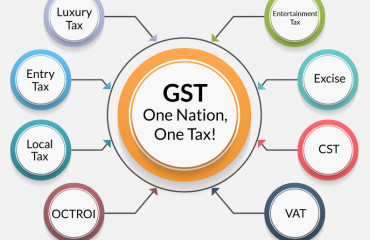
New Delhi: As it prepares to present the 2023-24 budget, the Centre finds itself blessed with a good revenue position. Tax collections in 2022-23 are on course to better its own projections, which lends it comfort. Yet, whether this will continue into the next year depends on how consumption keeps growing, across consumer classes. Data suggests that smaller producers and consumers were hit harder than top producers and consumers in the last two years. If top consumers ease up on spending—against the backdrop of rising interest rates and job losses—budget 2023-24 might need to do its bit to ensure the smallest of Indian consumers spend.
New Delhi: As it prepares to present the 2023-24 budget, the Centre finds itself blessed with a good revenue position. Tax collections in 2022-23 are on course to better its own projections, which lends it comfort. Yet, whether this will continue into the next year depends on how consumption keeps growing, across consumer classes. Data suggests that smaller producers and consumers were hit harder than top producers and consumers in the last two years. If top consumers ease up on spending—against the backdrop of rising interest rates and job losses—budget 2023-24 might need to do its bit to ensure the smallest of Indian consumers spend.
One data point where production and consumption are captured is the goods and services tax (GST), which is budgeted to account for 28% of the Centre's gross tax revenues in 2022-23. GST was introduced as a nationwide tax in July 2017, subsuming a host of central and state taxes. The government's hope was that the shift to GST and greater digitization would add assessees and revenues. The number of GST assessees has doubled from 6.7 million in August 2017 to 13.8 million in November 2022.
Compliance, too, has improved. GST assessees have to file a summary return (GSTR-3B) each month; those with an annual turnover of below ₹5 crore can choose to file this on a quarterly basis. Before the pandemic, on average, about 65% of assessees were filing their 3B return before the due date. In the past five quarters, this figure increased to 75%.
Tax Bounce
This makes the pre-pandemic and post-pandemic GST performance a story of contrasts. For each of the three years till 2020-21, growth in overall GST collections lagged nominal GDP growth. This was reversed in 2021-22 and is likely to hold for 2022-23 also. This is true for Centre's direct tax collection, too. The three major tax heads of the Centre—income tax, corporation tax, and central GST, which account for about 80% of its gross tax collection—are poised to top nominal GDP growth in 2022-23.
The first advance estimates released by the National Statistical Office peg nominal GDP growth for 2022-23 at 15.4%. Between April and November 2022, the latest data available, income and corporation tax have grown 24%, and overall GST collection has risen about 25%. This points to a tax-GDP ratio that will continue going up in 2022-23 as well, from the multi-year low of 2019-20.
Skew at the Top
In spite of the increase in assessees and collections, GST remains skewed towards the top. Of the 13.8 million GST assessees, only about 3-4 million pay tax. The rest either use input tax credit to adjust their entire tax liability, or don't incur any liability. Among the payers, the top 0.1% of GST-registered entities, which are principally companies with annual revenues of ₹500 crore or more, account for 50% of India's GST.
The smallest of GST payers—for example, a shopkeeper or a two-wheeler garage or a household services provider, with an annual turnover of ₹20 lakh to ₹1 crore—account for only 4.2% of overall GST collections. But their share among GST assessees is 24%.
A quarter of registered entities pay almost nothing. GSTN data shows that this structure has remained largely the same over time, underscoring the challenge of expanding the tax base meaningfully.
Protect and Broaden
The GSTN data also shows an interesting effect on smaller taxpayers during lockdown. In April-May of 2020 and 2021, the number of GST taxpayers dropped. But the average tax per taxpayer rose. This means those who paid GST were assessees at the upper turnover band, with smaller firms facing greater hardships. The average GST paid by older taxpayers has seen a greater increase in trajectory as compared to newer taxpayers.
Recent data suggests the same. While car sales rebounded 40% and 16% in 2021 and 2022, respectively, two-wheeler sales grew 10% and 13%. Similarly, while the average ticket size of a debit card payment has increased from ₹2,000 to ₹3,500 in three years, the average size of a UPI transaction has risen only 5%. How that top layer fares, and how the spending base is broadened, will influence tax calculations.
